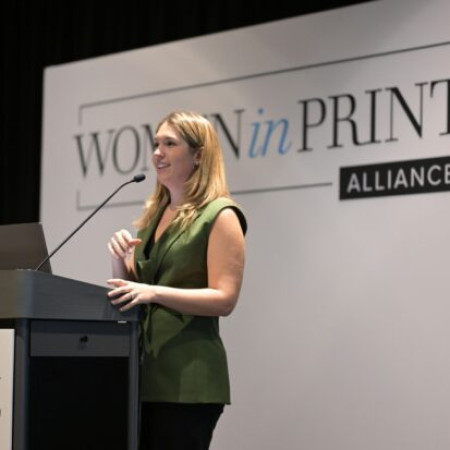I’ll admit it: I’m old enough to remember when “Speed Dating” was a fad, way before Match, Hinge, Bumble or various and sundry other dating apps pitched the promise of everlasting love.
The concept was simple: a middle-school mixer format, really (with alcohol). Invite an even-number of single men and women to a public venue, allow 30 minutes of socializing and informal introductions, and then get down to the task at hand: one-on-one conversations that were strictly regulated by the “Ding!” of a kitchen timer. When you hear the buzzer, move one seat clockwise. Seven minutes or less to find your soulmate: Go!
Speed Mentoring: What Is It? And Would It Work?
I was intrigued when a professional women’s development organization I’m a member of put out a call for volunteer “Speed Mentors,” women with 10+ years of experience in the government/public affairs industry who would “mentor” up to six women in the early stages of their careers in the same field. We’d meet at a neutral space after work, enjoy cocktail chatter over refreshments, and then conduct individual career discussions.
My head swirled with questions on the Uber ride to the event. Could I effectively mentor someone in an urgent, time-dictated setting? Would the mentees feel trusting enough to be immediately open and vulnerable with someone they had just met? What would we even talk about in this brief amount of time? Is “Speed Mentoring” a total gimmick, or can it produce valid results?
Key Takeaways from My Speed Mentoring Experience
The answers? Yes and no, to all of the above. Here’s what I learned from the experience and (hopefully) what my mentees gained during our compressed time together.
Speed Mentoring is Loud. Put 100 women in a room with the sole purpose of getting to know one another. Then tell them all to start talking NOW – at the same time and at a fast-pace. Assuming extroverts make up even half of the room, you have a recipe for one frenetic hour. It was actually stunning for the first few moments as each pair adjusted to the din.
An easy fix? Create enough space between pairs to allow for normal conversational volume, yet not so far apart that you lose the energy of a group setting. Body language always matters upon introduction and lunging forward to hear (while slightly screaming at one another) isn’t an ideal to way engender a comfortable start to any potential relationship.
Your Mentorship Match will be about 50%. Be prepared for rejection. Just like in speed dating, this exercise at its core is about identifying a spark between two people – in this case the mentor and mentee – that is mutually reciprocated may lead to something more. I ended each match discussion by sending the potential mentee a LinkedIn connection request right then and there. I told each of them I was doing this. By the end of the week, only 3 of the 6 had accepted my invitations AND had followed-up with a direct message.
Was I surprised or offended that the other half of the women “just weren’t that into me?” For a hot minute, until I realized that it made total sense – because I only felt a draw to fraction of the women, too. I recognized this was an ideal outcome for all involved. By making available a large pool of speed mentors with a variety of personality types and job titles, each mentee was able to connect instantly with women who were a potential “Ms. Right” for her career development needs.
Your TRUE Mentorship Match will be One (Maybe Two). Yes, eventually you will “go steady” (or close to it) and develop a true mentor-mentee relationship. Arbitrary factors, like location, may drive this. One of my true matches lives three blocks from me and we both already frequented the same neighborhood coffee bar, which makes it easy not only to meet up, but to extend the professional connection to a social acquaintanceship.
Career stage and job function might also flame the fire of your true mentor match. One of my initial discussions was with an intern who was three weeks into her role. While I think (I hope) I imparted useful tips on how to max out her experience, we simply weren’t in the same headspace to take it further. I also had one potential match tell me she had been “dragged by a friend” to the speed mentoring event. Not a lot of courtship runway there.
However, my other true match had already taken a big leap from an entry-level to a junior corporate position. I think I can offer her more value with less distance between our career development stages, and that she will find advice or tactics I share her to be more immediately actionable.
Don’t Try Speed Mentoring “At Home.” By “at home,” I mean at very small businesses employing fewer than 10 women or within single, small corporate departments or divisions. The negatives in these settings outweigh the positives.
First, participants in familiar, small group settings likely hold a pre-determined view of one another and/or have pre-existing relationships that can color objectivity and hinder candid exchanges, which are both important aspects of quality mentoring. Successful speed mentoring requires open mindedness and an uncluttered baseline relationship.
Second, a mentor-mentee rejection within a small group dynamic can be offensive or hurtful, even amongst career-focused women who know better than to take it personally. The last outcome of speed mentoring anyone wants is hard feelings or awkwardness that could damage a small team’s camaraderie.
Third, it’s most beneficial for mentees to broaden their exposure to different areas of a company or industry. This is especially important in the printing industry, which offers multiple, diverse career pathways to explore. This is a two-way benefit, as C-suite executives or managers in the speed mentor mix have the opportunity to talent scout amongst a group of employees they might not otherwise meet.
Speed Mentoring Requires Lots of Fish in the Sea. Remember, the goal of speed mentoring is to create quality potential one-on-one matches. That means it’s a numbers game. With a limited pool of mentors/mentees, there’s a greater risk that not everyone will find someone with whom they’d like to continue the initial conversation. This can dampen either side’s view of the concept and value of “mentorships,” which is negative outcome to avoid.
If you don’t have a large enough company to conduct a speed dating event internally, engaging a broader local organization or even partnering with a consortium of local business to find a larger pool of participants are good alternatives. The key here is to make sure there is a meaningful connection point for the women involved. At minimum, this would be “women in business,” but drilling down further to a common sector (like manufacturing) or industry (like printing) is most ideal.
Also, even numbers here are crucial! No one likes to be the odd woman out. Whether it was a chair switching mistake or whether the pairings were simply off from the beginning, I ended up “sharing” a mentee with another mentor for one of our seven-minute periods. This two-on-one match up led to an unintentionally overpowering vibe that was probably stressful for the mentee.
The Verdict? Speed Mentoring is Gimmicky, Yet Beneficial And – bonus! – the benefits are mutual for both parties.
For women at the early stages of their careers, finding a mentor is hard. Approaching a seasoned, senior professional and asking her for advice – or to commit to a long-term relationship – is intimidating. Too many women new to the workforce or industry just end up going solo. But speed mentoring offers a low-investment, low-risk opportunity at making that ask and potentially gaining the reward of a well-matched professional mentor.
For more experience (or, in some cases, jaded) mentors, looking at career exploration through the eyes of a mentee can revive professional excitement. During the cocktail reception preceding my speed mentoring event, a long-time colleague confided that she didn’t know what on earth she could possibly talk about or offer to a potential mentee because she was no longer “hungry” to advance in her own career. But by the end of the evening, her glow was back!
Like that colleague, I, too, felt both optimism and gratitude at the end of the evening. Knowing I could deliver even a tidbit of helpful information or counsel made me feel of service. I was also reminded that regardless of career stage, the world truly is our proverbial oyster. Seeing that belief internalized through the wide-open eyes of women just starting out in their careers was absolutely worth the 60 minutes of my volunteer time as a speed mentor.




